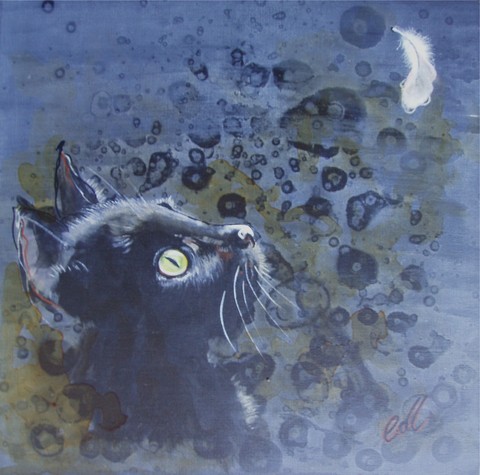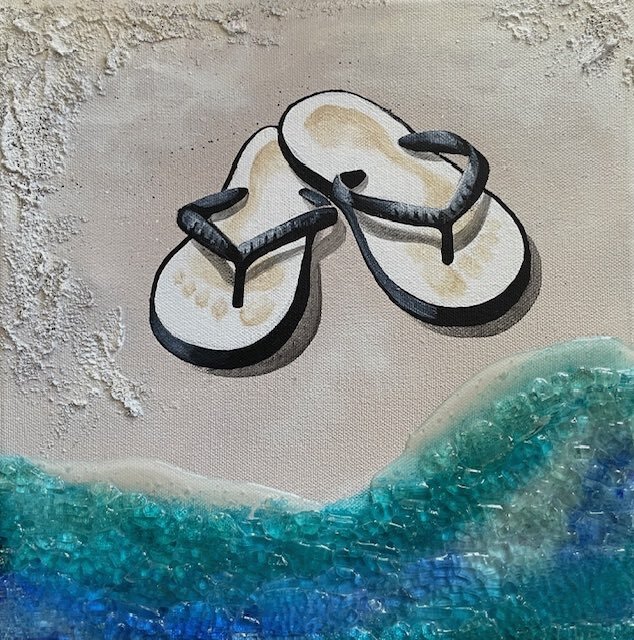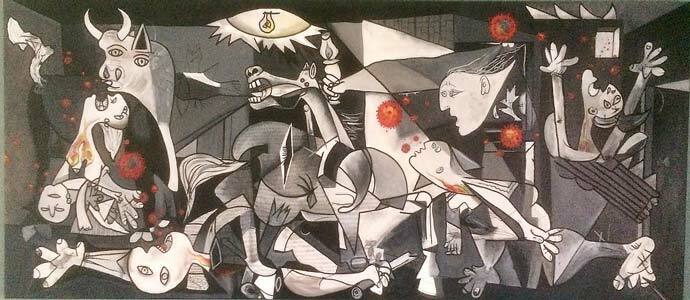The Best of Black: The Mysterious and Luxurious Shade
Understanding Black in Art
Black is often debated in the art world. Is it a colour or not? Technically, black is the absence of colour because it doesn't reflect any light. Everything appears black in a dark room with no light because there are no photons (light particles) to create colours. This makes black an "achromatic" or hue-less tone. But in practical terms, we consider it a colour, as we do when describing a "black cat" or using "black paint."
The Debate: Pre-Mixed Black vs. Mixing Your Own
Artists often debate whether it's better to use pre-mixed black from a tube or to mix their own. Some believe that true artists should always mix their own black, blending colours like ultramarine and burnt sienna to create custom shades. However, many artists, myself included, find that using pre-mixed black can be convenient and provide a pure, deep black that suits specific purposes perfectly.
Mixing black can give you more control over its warmth or coolness, but pre-mixed black can offer consistency when needed. It's all about what works best for your artwork at the time.
The Nature of Black
Black, a powerful and versatile element in art, is conservative and pairs well with nearly any colour except very dark shades like navy blue or deep purple, which can blend too much with black. Its versatility can inspire artists to experiment and create unique compositions.
Black is often linked to mystery, sophistication, and even elegance. However, too much black in a room or painting can make a space feel smaller or darker, even if the room is well-lit. But used wisely, black can make other colours pop. For instance, black paired with bright colours like yellow creates a striking contrast that draws attention.
Black's Cultural Meanings
In many Western cultures, black is the traditional colour of mourning. Yet, it also has positive and negative associations depending on context. In Halloween decor, black combined with orange evokes spookiness and fun. In early Western films, the villain often wore black, contrasting with the hero in white, a trope still used in some horror movies today.
Despite its associations with darkness, black can be used to create feelings of elegance and mystery. It's a popular choice for fashion and design when a sophisticated or sleek appearance is desired. Dark charcoal or deep brown shades can sometimes substitute for black in both art and fashion.
Using Black in Art
Black, the ultimate dark colour, plays a crucial role in creating contrasts. It can make other colours, especially lighter ones like yellow or white, stand out and look more vibrant. However, when used with other dark shades, black can blend too much, creating a composition that feels flat or uninteresting. This aspect of black can keep the audience intrigued and engaged in their artistic process.
Photographs and artwork often look more vivid when displayed against a black background, which is why some galleries, like the New Zealand Art Show, use black display screens to make the artwork stand out. While it doesn't suit every art style, black backdrops can enhance many pieces by offering a sharp contrast.
Shades of Black: Understanding Their Unique Qualities
- Bone: A soft, warm shade, bone black has hints of grey and beige in its undertones. It's less intense than other blacks and can have a more natural, muted appearance, often used for creating subtle contrasts.
- Ebony: A deep, rich black with a slight warmth to it, often compared to the dark wood it is named after. Its subtle brownish undertone makes it a warmer black, and is ideal for adding depth without the starkness of pure black.
- Jet: A cool, intense black with a glossy, reflective finish. It has no noticeable undertones, making it one of the purest blacks available. Jet black is commonly used for dramatic, bold statements.
- Ink: Slightly cooler and bluer in tone, ink black mimics the look of traditional black ink. It's perfect for artwork or designs where a subtle, cool black is needed to create a crisp, clean appearance.
- Lampblack: A cooler black with a slightly bluish-grey undertone. Historically created from the soot of burning oil lamps, this shade is often used in traditional oil painting and offers a subtle, smoky quality.
- Coal: A warmer black with deep brown undertones, coal black can bring an earthy richness to a composition. It's ideal for creating a grounded, natural feel in art or design.
- Carbon: A neutral black with a slightly matte finish, carbon black is both versatile and balanced. It's often used in technical and industrial applications because of its consistent, strong colour.
- Charcoal: A softer, warm black with greyish tones. It's less intense than pure black and works well in artworks where a more understated dark tone is desired.
- Raven: A cool coloured black with a slight bluish or greenish hue, often reflecting the iridescence you see in raven feathers. This black adds a mysterious, dynamic quality to compositions.
- Mars Black: This is a very dark, cooler black with a strong opacity, typically used for painting. It's manufactured from synthetic iron oxide and has excellent coverage for painting, making it ideal for bold, opaque layers.
- Midnight: A cool, deep black with blue undertones. Midnight black resembles the dark sky at night and is an excellent choice for creating a sense of vastness or extra depth.
- Obsidian: This is a glossy, rich black with subtle, cool undertones reminiscent of the volcanic glass it's named after. Its shiny surface makes it stand out, providing a sleek, reflective finish when used in art.
- Onyx: A much warmer black with brownish undertones, onyx is often seen in polished stone form. It's a more luxurious, rich black used to add a sense of elegance or sophistication when used in painting.
- Sable: A warm black with reddish-brown undertones, sable black adds a velvety softness to designs and artwork. It's ideal for creating a luxurious or vintage feel.
Each shade of black offers a unique character and temperature, allowing you to choose the perfect black for your specific needs. Whether you're aiming for a warmer, more grounded tone or a cooler, crisper look, understanding the unique qualities of each shade can empower you to make informed artistic decisions.
In Conclusion
Black may be the absence of colour, but it holds immense power in art. Whether used to create dramatic contrasts or evoke a sense of elegance or mystery, black remains an essential tool for artists. Whether you mix it yourself or use pre-mixed black, this "colour" is one that every artist should embrace in their creative journey.
Keeping it simple and straight to the point black is the absence of colour and is therefore not a colour. Main image is "I Can Wait" a Cat Pet Portrait by Collette
Why Not Check Out Some Other Colours Too -
50 Powerful Shades Of Grey? The Thrilling Colours In Art
Beautiful Blue: The depth of Sea to the Sky and Beyond
In the Pink: Celebrating Valentines Passionate Colour
Shades of Purple: A Trip into the World of Royalty
Stunning Silver: The Best Metallic Colour with Class and Glamour
The Gloriousness of Gold: Unleashing its Luxury and Passion
Yellow: The Happy Glowing Hue That Makes Warmth, and Inspiration
What Is The Colour Burgundy Or Claret, Colours Or Wines?
Whiter Shade of Pale: Exploring the Simplicity of White
Rich as Red: Exploring its Many Fiery Shades
Blazing with Energy: Embracing the Fiery Spirit of the Color Orange
Glorious Green: The Awesome Yet Envious Colour of Emeralds
And while you’re here - Touching on Colour Mixing can help you understand how to create other colours.
Finishing with a quote by Pierre-Auguste Renoir -
"I've been 40 years discovering that the queen of all colours was black."
Posted: Tuesday 13 April 2010


